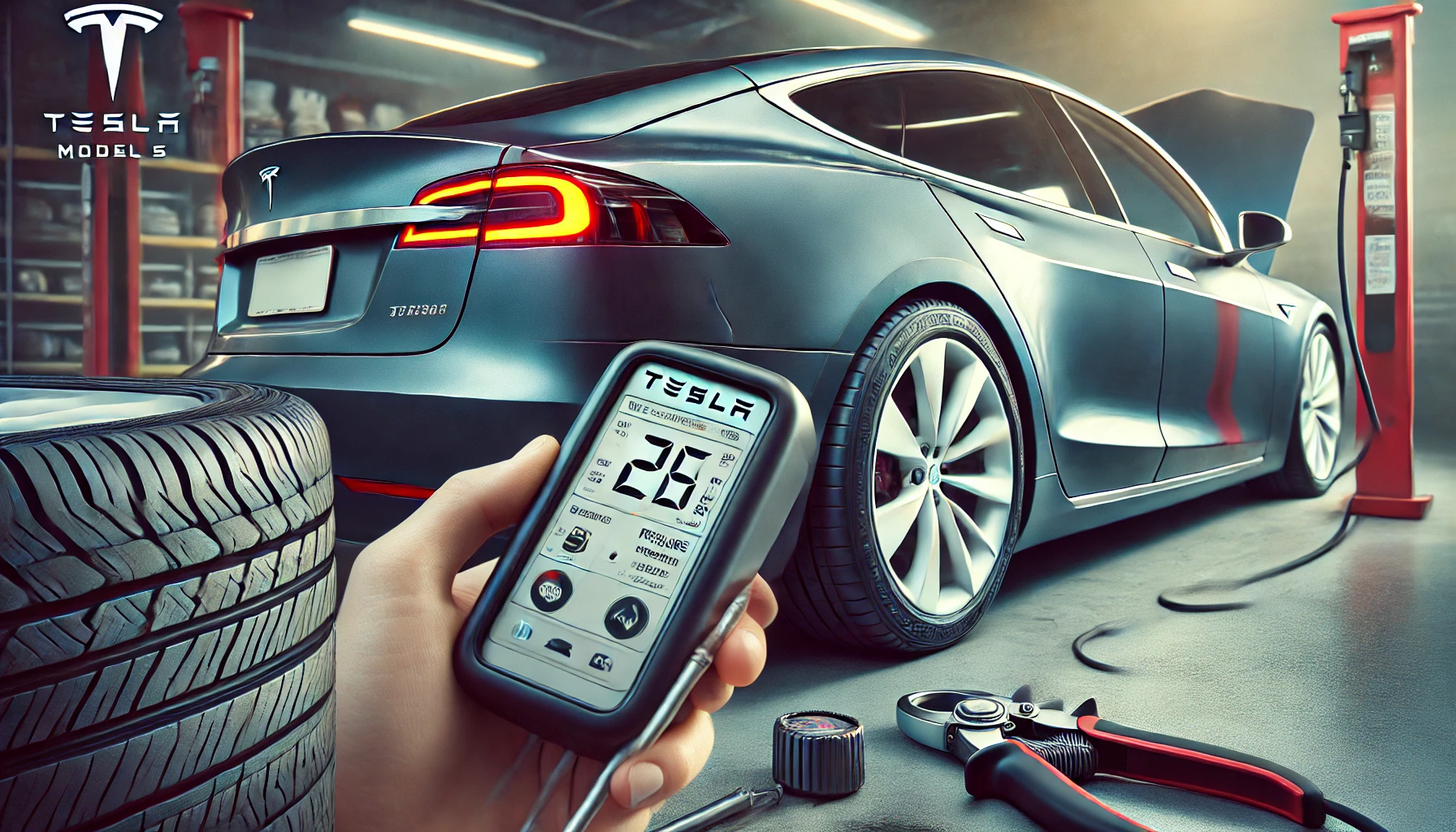
Common Causes of Tire Pressure Sensor Fault in a Tesla Model S
- Low Tire Pressure: The most frequent cause of a TPMS alert is low tire pressure. For the Tesla Model S, the recommended tire pressure is typically around 45 PSI, but it may vary based on the model year and tires.
- New Tires or Rotation: After a tire change or rotation, the TPMS might need recalibration. This is common and can usually be fixed with a quick reset through the car’s system.
- Sensor Damage or Wear: Over time, sensors can fail or get damaged, especially due to weather exposure or impacts. A damaged sensor will cause the system to report a fault.
- Battery Depletion: TPMS sensors in Tesla vehicles are powered by small internal batteries, which usually last 5-10 years. If a sensor battery fails, the sensor itself will need to be replaced.
- Software Glitches: Occasionally, a software bug can trigger false warnings. Updating or resetting the system often resolves these glitches.
- Extreme Temperature or Altitude Changes: Rapid shifts in temperature or high-altitude environments can temporarily affect the pressure readings, causing false alerts.
How to Fix the Tire Pressure Sensor Fault in a Tesla Model S:
- Check Tire Pressure:
- Use a manual gauge to check all tires, or check the pressure reading on the Tesla’s touchscreen. The recommended PSI for the Tesla Model S is around 45 PSI, but always confirm with your owner’s manual.
- Inflate any underinflated tires to the proper pressure.
- Reset the TPMS:
- Go to the Controls menu on the Tesla touchscreen.
- Select Service > Tire Pressure Monitor > Reset Sensors.
- Drive the vehicle for about 10-15 minutes at speeds over 15 mph to recalibrate the system.
- Update the Software:
- Make sure the car is running the latest software version. Updates often fix bugs that may trigger TPMS warnings.
- Check for updates by navigating to Software on the touchscreen and install any pending updates.
- Replace Faulty Sensors:
- If a sensor is damaged or its battery is depleted, it will need to be replaced at a Tesla service center. They can perform diagnostics to find which sensor is faulty and replace it.
- Replacement costs can vary depending on labor and parts but typically fall between $50-$150 per sensor.
- Address Environmental Factors:
- If you’ve been driving in extreme weather conditions or high altitudes, allow the car to adjust. Sometimes, temperature or altitude changes can cause temporary low-pressure alerts that resolve after a short drive.
